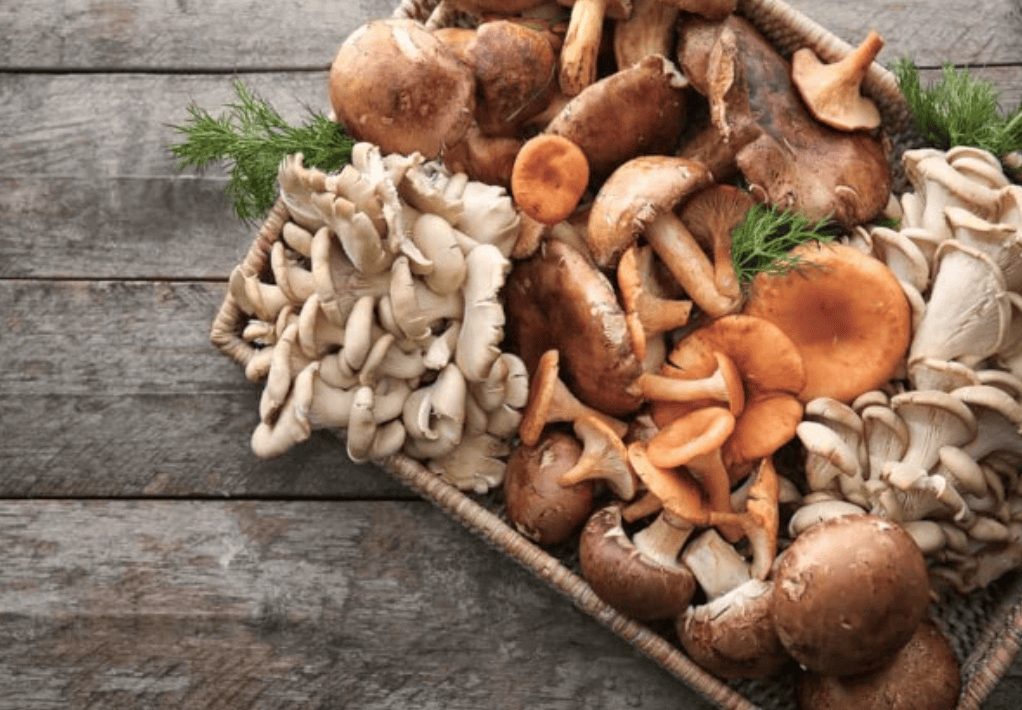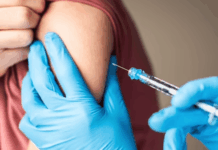From wakeup-world.com:
Since the dawn of humankind, medicinal mushrooms have played a pivotal role in human destiny.
Not only did the ancient wise ones turn to mushrooms for food, but they knew to call upon the mushroom to aid in healing. And this wasn’t just one culture in a tiny sliver of the world—just about every civilization throughout time has revered and used medicinal mushrooms.
For thousands of years, Traditional Chinese Medicine, Japanese, and Tibetan medicine have used a variety of mushrooms including reishi, shiitake, maitake, turkey tail, cordyceps, and chaga to promote health, longevity, boost the immune system, improve energy and endurance, detoxify the system, and help ease countless ailments.
Hippocrates, the ancient Greek physician, considered “the father of medicine,” said the amadou mushroom (Fomes fomentarius) could cauterize wouMushroom medicine has been used for thousands of years.
In Brazil, the Agaricus blazei Murrill mushroom was traditionally used to fight physical and emotional stress, stimulate the immune system, and treat circulatory and digestive problems.
Even our hunter-gatherer ancestors knew to use mushrooms. A 5,300-year-old-iceman discovered frozen in the Alps, was found to have suffered from intestinal parasites that would have likely caused stomach pain. In his possessions, scientists found two birch polypores (Fomitopsis betulina)—which are said to have antiparasitic, antibiotic, and immune-boosting properties—and they contain toxic oils that create laxative effects.
Finally, the science has caught up to the natural medicine wisdom of our ancestors. There are now hundreds of studies that support the use of mushrooms medicinally to help improve our overall wellness, improve energy and endurance, fight depression and anxiety, rebalance the gut microbiome, lower inflammation, boost memory, productivity and concentration, support immunity, promote longevity, and so much more.
In this beginner’s guide, I aim to illuminate the mysterious yet magical world of medicinal mushrooms, sharing ancient knowledge and wisdom about what they are, what they do, the best ones to try using, how to prepare them, where to buy them, and more.
What Are Medicinal Mushrooms?
First, a brief Biology 101 refresher.
Mushrooms often get lumped in with plants, but they’re actually part of the fungi family that includes yeast, molds, mildews, rusts, and smuts.
“Mushrooms are noble organisms,” David Wolfe, nutritionist and farmer, explained to me in our docu-series Remedy: Ancient Medicine for Modern Illness. “They sit in that karma free zone of recyclers. They take stuff no longer usable and make it usable for some other organism.”
Fungi are like a long-distant cousin to humans.
About a billion years ago, fungi branched off from animals (not from plants). And when you compare human cells to mushroom cells, they’re very similar.
You actually have fungi living on and inside you right now. Everyone does. This isn’t a big deal—as long as our immune system and gut microbiome remain healthy and balanced, we live in harmony.
To date, we’ve classified over 100,000 different mushroom species, but there may be as many as 3.8 million.
Mushrooms can be poisonous, edible, psychedelic, or medicinal (also known as functional).
Functional mushrooms are believed—and in some cases have been scientifically proven—to have healing properties. Studies show that humans respond more to mushrooms than plants. Surprisingly, scientists believe this is because we’re more closely related to mushrooms than we are plants, and because we’ve co-evolved together.
What Do Medicinal Mushrooms Do?
It’s almost easier to explain what medicinal fungi don’t do, because they do so much.
Most of us know mushrooms as food—in fact, they’re a superfood. Adding edible mushrooms like shiitakes, chanterelles, and lion’s mane to your diet means you’re supercharging your body with vital nutrients including:
- B vitamins
- Phosphorus
- Vitamin D (note: store bought or those farmed with little sunlight won’t have as high a dose)
- Selenium
- Copper
- Potassium
- Ergothioneine,(an antioxidant)
- Glutathione (another antioxidant)
- Riboflavin
- Niacin
- Fiber
- More protein than most vegetables
- Provide all the essential amino acids (especially important for vegetarians or vegans)
- Plus, edible mushrooms are low in calories, carbohydrates, fat, and sodium, and cholesterol-free.
In truth, mushrooms do much more than just provide essential nutrients.
Modern science has found about 2,000 edible or medicinal fungi that have positive healing and preventative benefits and properties. Of this small selection, modern medicine has identified about 100 medical functions.
Numerous studies show that mushrooms may exert healing and preventive properties and benefits including:
- Antioxidant
- Anticancer
- Antidiabetic
- Antiallergic
- Antiviral
- Antibacterial
- Antiparasitic
- Antifungal
- Anti-inflammatory
- Antitumor
- Anti-cancer
- Cardioprotectant (protects the cardiovascular system)
- Nephroprotectant (protects the kidneys)
- Hepatoprotection (protects the liver)
- Chemoprotectant (protects against toxic or adverse effects from chemotherapy)
- Radioprotectant (protects against radiation damage)
- Immune health
- Improved brain health
- Improved gut health (mushrooms are considered a prebiotic—the stuff our healthy gut bacteria feast on to grow stronger and multiply)
- Nervous system support
- Improved sleep
What gives mushrooms such a potent punch are their bioactive compounds, mostly the polysaccharides—a slow carbohydrate that takes a long time for your body to break down and digest—found in mushrooms.
Depending on their structure, polysaccharides can store energy, send cellular messages, and support cells and tissues.
Mushrooms contain a specific powerful polysaccharide–?-glucans—that are rich in fungi, bacteria, yeast, and algae—that stimulates the immune system.
And studies have found mushroom ?-glucans linked to health benefits and properties including anticancer, cardioprotective, hepatoprotective, antioxidative, antimicrobial activities, and immunomodulatory (stimulates or suppresses the immune system depending on what the body needs to fight infections and cancers), and antibiotic properties.
What Are The Best Medicinal Mushrooms?
Medicinal fungi can serve many purposes—and often different ones, depending on the mushroom.
Some boost brain function, others improve energy, reduce symptoms of anxiety or depression, activate or suppress the immune system depending on what the body needs, support heart health and much more.
Most health practitioners recommend specific mushrooms to address specific sicknesses. With that in mind, as you read the list below, consider what health areas you most want to work on.
And this isn’t an exhaustive list. There are other medicinal mushrooms that people use. But here are 11 of the most common and easier to access mushrooms that are worth considering adding to your healing journey.
I’ve included suggested preparation methods and doses, however dosing is individualized. To date, there is no modern consensus from the scientific community on what constitutes a therapeutic dose. The doses included are based on traditional herbal medicine, mainly.
For tonic purposes and treatments, the dose is low, about 0.5-3 grams per day.
For all culinary mushrooms, the dose is as much as you may consume during meals.
A good rule to use whenever incorporating supplements into your diet is to start small and pay close attention to any changes in your body and how you feel. Give yourself a few days on the small dose and slowly work up.
11 Mighty Mushrooms To Heal And Build Overall Wellness
Shiitake
Anticancer – Heart support – Immune support – Body Composition
Prized as a delicacy and native to East Asia, the shiitake mushroom (Lentinula edodes) has enjoyed a role in Chinese, Korean, Japanese, and Russian medicine for thousands of years. It was even and gifted to emperors by tribes who foraged it in the wild.
This “Queen of Mushrooms” is known as an elixir of life. In China it symbolizes youthfulness and virility, and it is known for having aphrodisiac properties.
Grown on fallen logs, the Chinese have also turned to shiitake mushrooms to support circulation and longevity. That makes sense when you learn that shiitake mushrooms contain high amounts of natural copper–a mineral that supports blood vessels and the immune system.
Shiitakes also contain polysaccharides that contain a compound known as lentinan, which strengthens the immune system. You’ll also get a dose of beta-glucans when you introduce shiitakes into your system. Beta-glucans can boost white blood cell production that enhances your body’s ability to fight off harmful pathogens like viruses, bacteria, and toxins.
Shiitake mushrooms are commonly used to help treat fatigue, indigestion, edema, anemia, chronic hepatitis, hypertension, and hyperlipidemia.
Suggested Preparation Method: Cooked (Sautéed, Tea, Soup), Extract (Liquid or Powder)
Suggested Dose: 5-10 grams per day to improve immune system and heart health (tonic), 1-2 fresh mushrooms daily, 6-16 grams of dried mushroom in teas – soups – dishes, 6-9 grams dried mushroom for decoction, 15-30 grams whole fresh mushroom
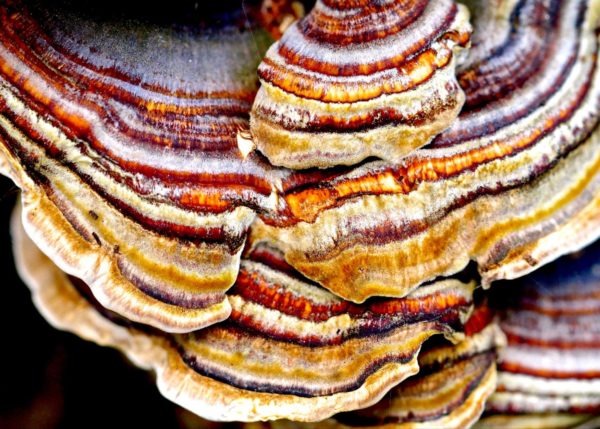
Reishi
Immune Support – Emotional Regulation and Stress Management – Reduce Fatigue
Known as Ling Zhi in Chinese Medicine, which means “Spirit Plant,” the ancient ones believed that taking reishi (Ganoderma lucidum) for a prolonged period makes the body light–granting one extraordinary gifts like flight, telepathy, telekinesis, and clairvoyance. And it was used by monks as an aid for spiritual journeying and development, meditation, higher cultivation, and transcendence.
They even believed it extended life to make one an immortal. (Perhaps this is why ancient scrolls show deities or emperors holding reishi mushrooms or standing upon reishi as a divine altar.)
Here’s short video on the reishi mushroom that we filmed with expert forager Daniel Vitalis:
Ancient scholars classified six different types of reishi by color–white, red, yellow, green, black, and purple. All types not only prevent and treat disease, but cultivate the virtues of loyalty, honesty, gentleness, and it fortifies the will—bravery and undauntedness.
Reishi is also called the “Supreme Protector,” it was originally placed in the Superior Class of medicine, meaning it goes beyond most medicines and facilitates realization of human potential.
Through the ages, reishi has gained notoriety for its positive effects on the immune system, fatigue-fighting properties, and emotional and mental regulation. It truly is a mind-body-spirit medicine.
Reishi is believed to be especially effective if you’re already under the weather or are undergoing or just completed cancer treatments. Found in Asia, North America, and Europe, studies show reishi may alter inflammation pathways in white blood cells, and in people battling cancer, molecules in reishi have been found to increase activity in the natural killer cells (an important white blood cell that fights cancer).
Considered an adaptogen, reishi mushrooms help you regulate your nervous system so it adapts and manages stressors better. A side bonus with adaptogens: they support your energy levels, helping fight fatigue. It is also used to help treat chronic fatigue, altitude sickness, insomnia, forgetfulness, palpitations, wheezing, shortness of breath, irritability, cold hands and feet, and allergies.
Suggested Preparation Method: Tincture (Dual-Extract), Powdered Extract or Decoction
Suggested Dose: Raw herb for decoction 3-15g, Powdered Extract 1-5g (lower for tonic use, higher for specific conditions), Tincture 0.5-2.5 mL
Lion’s Mane
Brain Booster – Reduce Anxiety and Depression – Immune Support – Digestion
Would you like to improve your memory, focus, concentration, and give your brain an overall boost while simultaneously soothing the nervous system and supporting your immune system?
If that’s a yes, then you’ll want to reach for the lion’s mane (Hericium erinaceus) also known as Hóu Tóu G? in Chinese Medicine. This distinctive looking mushroom, which grows on living and dead broadleaf trees in Europe, Asia, and North America, is loaded with beneficial compounds that your brain, nervous system, and immune system love.
Native Americans were said to have carried (and some still do) powdered lion’s mane for its ability to treat wounds, especially to disinfect and stop bleeding.
Lion’s mane’s main claim to fame today is that it has two beneficial compounds hericenones and erinacines. Erinacines has been found to increase NGF (nerve growth factor) production, which regulates nerve cell survival, development, and function. This may protect against neurodegenerative diseases including Alzheimer’s and Parkinson’s, and improve memory and cognition.
As if cognitive improvement wasn’t enough, lion’s mane may also have anti-inflammatory effects that can reduce feelings of anxiety or depression. And it may also boost immunity through beneficial changes in the gut microbiome.
Traditionally, lion’s mane has been used to treat gastritis, stomach ulcers, reflux, and general digestive disturbances.
Suggested Preparation Method: Cooked (Sautéed), Extract (Liquid or Powder)
Suggested Dose: 0.25 – 1 gram powdered extract, 5 grams whole mushroom in food
Maitake
Ease Physical and Mental Stress – Immune Support – Lowers Blood Sugar
Known as “The King of Mushrooms,” Maitake mushrooms (Grifola frondosa) have long been used in Asian cultures as a tonic to support longevity, improve vitality, boost the immune system, and lower blood sugar.
Maitake actually means “dancing mushroom” and as the legend goes, ancient foragers literally danced for joy upon finding this gem in the woods.
Today Hui Shu Hua, as it’s called in Chinese Medicine, is lauded by health practitioners because it’s rich in ?-glucans that can activate and stimulate white blood cells including macrophages, T-cells, natural killer cells, and neutrophils.
Plus, it’s an adaptogenic herb, helping to regulate the body when it’s under stress, providing both physical and mental relief.
Research also suggests that maitake mushrooms may help lower blood sugar which may help people with type 2 diabetes.
It’s commonly used to help treat metabolic syndrome, hypertension, obesity, high cholesterol, and osteoporosis.
Suggested Preparation Method: Cooked (Sautéed, Tea), Extract (Liquid or Powder)
Suggested Dose: 0.25 – 2.5 grams of extract, 2-9 grams of whole mushroom
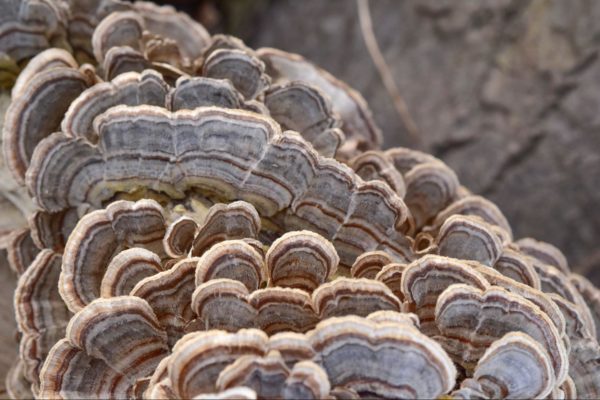
Turkey Tails
Improve Energy – Promote Healthy Microbiome – Immunomodulation – Cancer treatment
Turkey tail mushrooms (Trametes versicolor also known as coriolus versicolor) get their name because they look like a turkey tail. Found throughout the world on dead trees, turkey tails boast an impressive array of health properties.
The ancient texts from China and Japan revere this mushroom for its ability to strengthen health, physically and mentally. Taken over time, turkey tails are thought to extend life and enhance the immune system. It is one of the best detoxifying herbs, has anti-inflammatory properties, and is hepatoprotective.
Modern science has shown that turkey tails sport an array of triterpenes, organic acids and alkaloids that can improve your immune system. But their real star power may come from the polysaccharide krestin (PSK) and polysaccharide peptides (PSP) that you find in this mushroom.
PSK and PSP have powerful immune-boosting properties that stimulate white blood cells to activate and eliminate harmful bacteria, viruses, and other pathogens wreaking havoc on your body. PSK and PSP are so powerful that some countries including China and Japan use it as a complementary treatment for cancer patients undergoing radiation or chemotherapy.
Turkey tails also perform well when it comes to warding off fatigue. That’s because fatigue is a common symptom of a weak immune system.
Traditionally, turkey tails are also often used to help treat jaundice, hypochondriac pain, chronic coughing, asthma, joint inflammation, hepatitis, nephritis and rheumatoid arthritis.
Suggested Preparation Method: Tincture (Dual Extract), Powdered Extract, Decoction
Suggested Dose: Raw herb for decoction 9-27g, Tonic use 6-12g of dried mushroom taken as tea twice daily
Here is a video we filmed with Tero Isokauppila, owner of Four Sigmatic, about the healing power of tree mushrooms:
Chaga
Immune Boosting – Anti-Inflammatory – Longevity – Digestion
Harnessed by the Mesopotamians, Egyptians, Chinese, and Siberian cultures for over 4,000 years, you can find chaga mushrooms (Inonotus obliquus) anywhere you find birch trees.
Chaga has a storied history, used in shamanic rituals, especially by the Khanty / Oystak peoples. It was also used by the Ainu, the original inhabitants of Japan, for digestive upset and in religious ceremonies. Known as a “Gift from God” by Siberian cultures, chaga mushrooms are used to aid the digestive system and liver, where it can treat hidden pathogens.
If you’re looking for a mushroom packed with nutritional value, then this one’s for you. It’s loaded with b-complex vitamins, vitamin D, potassium, cesium, amino acids, fiber, copper, zinc, iron, selenium, magnesium, and calcium.
And it’s filled with antioxidants that could slow the aging process or reverse signs of it. Chaga can also help reduce chronic inflammation which may help reverse or lessen symptoms caused by other chronic conditions including autoimmune diseases and rheumatoid arthritis.
Like other mushrooms on this list, chaga can also support the immune system.
Suggested Preparation Method: Decoction, Powdered Extract
Suggested Dose: 1 tsp of dried, ground mushroom in long steeped tea (8-24 hours), 1-3 cups per day.
Cordyceps
Improves Energy and Endurance – Heart Health – Fights Inflammation
Cordyceps (Cordyceps sinensis) have a long history in Traditional Chinese Medicine and Tibetan Medicine where it’s used to improve energy and endurance, and cure sickness, kidney disease, and a low sex drive.
Cordyceps sound like something out of a sci-fi flick. Instead of growing on trees, fallen logs, on the ground or under leaves, they’re a parasitic fungus that grows on the larvae of insects or certain caterpillars found in China and Tibet.
In the wild, it can actually take up to six years to grow, where it is found along the Himalayan foothills and the highest quality comes from the Tibetan plateau. Today, it’s rare to find cordyceps in the wild—most are grown commercially.
Legend holds that cordyceps were discovered via zoopharmacognosy. Tibetan yak herders observed that the animals who consumed this were stronger, more vital and vigorous, healthier and lived longer.
Traditionally, cordyceps are used to treat low back pain, low sexual desire and potency, chronic cough, wheezing and asthma. They can be made into a stew with duck, chicken, pork, or fish to help address weakness, dizziness, signs of debility and lowered immune resistance.
D?ng Chóng Xià C?o, or Winter Worm Summer Grass (as it’s known in Chinese Medicine), is said to be safe to take for long periods and is comparable to Ginseng for its life-extending benefits.
The current science shows some of the potentials of this extraordinary mushroom include anti-aging and anti-tumor properties. Cordyceps have also long been used to bolster energy and endurance improving exercise and performance. And they may also help improve heart health and fight inflammation.
Suggested Preparation Method: Tincture (Dual-Extract), Powdered Extract or Decoction
Suggested Dose: Raw herb for decoction 3-14g, Tincture 2-4 mL
Tremella
Anti-Inflammatory – Antioxidant Properties – Nourishes Skin
Tremella (Tremella fuciformis) goes by many names. Snow fungus, silver ear, snow ear, white wood ear. It’s mostly found in Asia and tropical regions including Central and South America, Australia, and the Pacific Islands.
Called Bai Mu Er, or “white wood ear” mushroom in China, for centuries the most beautiful women in China used it for skin complexion, suppleness, and radiance and to maintain youthfulness and vitality. That’s because white fungus polysaccharides (found in tremellas) can act as a natural moisturizer as it improves water retention when coated on the skin.
Like other mushrooms on this list, tremella’s potential health benefits may vary. From anti-inflammatory to antioxidant properties, tremella mushrooms may also boost your immune system and improve your brain health.
Traditional medicine has used tremella mushrooms to help treat cough, palpitations, and high cholesterol. It can be useful in treating neurodegenerative disease, cardiovascular disease, obesity, and high cholesterol.
Suggested Preparation Method: Powdered or Liquid Extract, Cooked
Suggested Dose: 1-2 full droppers 3-4 times daily, ½ – 1 tsp powdered extract daily, culinary amounts
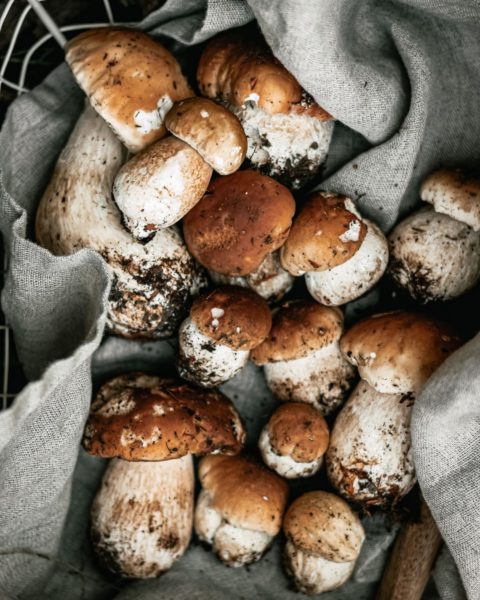
Porcini
Reduce Inflammation – May Kill Colon Cancer Cells
If you’re suddenly envisioning porcinis (Boletus edulis) lightly sauteed with some butter or ghee, you’re not alone. Prized in Italian and French cuisine, known as “King Bolete.”
As delicious as these mushrooms taste, they pack more than culinary punch—they’re high in antioxidants including beta-carotene, ascorbic acid, and lycopene that can help reduce chronic inflammation.
Studies also show that porcini extract may also help kill colon cancer cells, or block the growth and spread of colon cancer.
Adding porcinis to your meals can help benefit weight loss, digestion, immune health, inflammation, are high in antioxidants and more.
Suggested Preparation Method: Cooked
Suggested Dose: culinary amount
Chanterelle
Vitamin D – Brain Function – Immune Boost
You can find the trumpet or funnel-like looking chanterelle mushroom throughout North America, Africa, Asia, and Europe. There are multiple species with different colors but the most common is the golden-yellow, known scientifically as Cantharellus cibarius.
Because you often find these mushrooms grown in the wild, they’re usually high in vitamin D, which improves energy levels and bone health. With the golden-yellow chanterelle, you also get bioactive antioxidant carotenoids that help with eyesight. In fact, Chinese Medicine harnessed this herb to treat eye conditions such as night blindness and inflammation.
We’re not done yet. Chanterelles also contain phenolic acids that can help boost the immune system through antioxidants, and anti-inflammatory and anticariogenic properties.
Traditionally, chanterelles were used for their anticarcinogenic, antigenotoxic, anti-inflammatory, antimicrobial, antioxidant, immunomodulant, and vulnerary (used to heal wounds) properties. And they can also help treat respiratory tract infections.
In Latvia, this herb was used to treat infections (Tonsillitis, tuberculosis, respiratory) and treat wounds (abscesses, boils). It is said chanterelles can even treat intestinal worms and also help remove radiation from the body.
Suggested Preparation Method: Cooked
Suggested Dose: culinary amount
Poria
Improves Digestion – Fights Depression – Improves Sleep
It doesn’t attract as much hype as other mushrooms, but Traditional Chinese Medicine has used poria mushrooms (Poria cocos) for almost 2,000 years. And it’s one of the most common remedies prescribed by practitioners to treat wide ranging ailments.
Known as Fu ling, poria mushrooms are commonly used in classical Chinese Herbal Medicine formulas used to treat diarrhea, edema, epigastric distention, palpitations, headaches, dizziness, insomnia, restlessness, and forgetfulness.
When combined with the bark of the tree from which it grows, Pinus longifolia, it develops psychoactive properties. It also gets used in meditative arts.
Poria mushrooms also grow in North America where it was harnessed by native tribes as a food and as a healing aid.
Today, you may find it used to treat fatigue, insomnia, nervousness, restlessness, anxiety, tension, fluid retention, and stomach problems. It’s even being studied for its anti-tumor properties that may help fight or prevent certain cancers.
Research is still underway, but poria mushrooms are believed to help fight depression by increasing serotonin and dopamine, lowering inflammation in the prefrontal cortex.
Suggested Preparation Method: Tincture, Powdered Extract or Decoction
Suggested Dose: Raw herb for decoction 9-18g (up to 60g for specific conditions), Tincture 2-4 mL
How To Use Medicinal Mushrooms?
Incorporating mushrooms medicinally into your life is more accessible today than ever before. From extracts to teas and powders, you have choices.
How you use them will largely depend on your preference and lifestyle.
And mushroom medicine is not a one-and-done activity. It’s meant to be used daily (or regularly over time) as a complement to other healthy lifestyle behaviors and possible treatments.
Extract/Tincture
If you’re looking for potency, opt for an extract or tincture.
The terms often get used interchangeably. But both result in a liquid form that has come from harvesting mushrooms, drying them, then using a fluid to extract the properties.
Tinctures usually use drinkable alcohol to pull out the properties, while extracts use water (warm and/or cold).
Extracts are generally thought to have the upper hand over other forms due to the higher concentrations of beneficial properties, including ?-glucans and triterpenes. But the amount depends on the extraction fluid used. ?-glucans are water-soluble, and triterpenes are alcohol soluble.
The best extracts use what’s called a dual-process—using water and alcohol to extract ?-glucans and triterpenes. And you may find a triple-process that uses all three – warm water, cold water, and alcohol – to ensure the final products get imbued with the beneficial properties.
Usually, you can take the suggested drops in warm water or directly in the mouth.
Powder
Supplements have exploded in the last decade. So it’s relatively easy to find functional mushrooms in powder form. It comes from harvesting the mushroom, then drying, and finally grinding it.
Often, you’ll find medicinal fungi as pills or a loose powder. Some people pop the capsule on its own. Others may open the pill or take the loose powder and add it to a smoothie, protein shake, hot cereal, or warm beverage.
Some people swear by dissolving powder in a hot liquid such as tea, coffee, cocoa, hot water, or broth.
There’s no hard and fast evidence—it’s mostly preference.
Typically you can find powders for a single mushroom or multiple ones added in one formula.
When you find multiples, it typically has a targeted health benefit like supporting the immune system or improving brain health.
Note: Sometimes you may find powder extract. It simply means that the mushroom went through an extraction first before undergoing a drying process.
Tea
For thousands of years, people have stepped mushrooms in water and enjoyed them as tea. When you choose the path of tea, not only do you get all the health benefits from the mushrooms, but there’s the spiritual connection and heart opening that comes from the ritual of preparing it.
Sign me up!
If you want to buy your own dried mushrooms and steep them, you certainly can. But you can also find mushroom tea in most health food stores or online.
Some of the more popular mushrooms used medicinally in teas include chaga, turkey tails, reishi, tremella, and lion’s mane. Today, it’s pretty common to find mushroom tea combined with other ingredients to improve the taste.
Finding a flavor that works for you is all about discovery. Try approaching this with curiosity! It’s an adventure finding the mushroom tea that speaks to your body, mind, heart, and spirit.
Decoctions:In Chinese Medicine, it’s traditionally called a Tang, which means soup. Decoctions are hot water extracts. Generally, you cover the mushroom (or any herb) with water, bring to a boil (uncovered), then simmer (covered).
With functional mushrooms, you need to simmer at least 40-60 minutes, if not a few hours for harder substances—especially reishi and chaga mushrooms.
The goal is to create a dark colored and strong tasting tea.
This can be drunk as-is, for 1-3 cups per day, or you can use it as a base in soup recipes.
Whole (dried or fresh)
From a nutritional profile alone, everyone should add more mushrooms to our diet.
If you love cooking then adding more edible mushrooms such as shiitake, maitake, chanterelles, lion’s mane and others to dishes can be nourishing and healing.
Depending on where you live, finding whole mushrooms might pose a challenge. Definitely check any local natural food stores, farmers markets, or co-ops. You might hit it lucky and discover some delicious fresh mushrooms that you can sauté, add to soups or stews, or stir fries. You can also look for dried mushrooms that you can reconstitute with warm liquid (water or broth).
When using whole mushrooms, you’ll want to cook them to release the beneficial compounds and properties.
Full disclosure: to really reap all the health benefits and properties of mushrooms, you’ll likely need to use other forms too whether that’s a powder or extract. The other forms give you higher concentrations of all those beneficial compounds and properties, plus convenience. Whereas you would have to eat a lot of mushrooms in order to get the same effect, and for some like chaga, reishi, and cordyceps using an extract is a must unless you plan on preparing them as a tea or decoction yourself.
Definitely add them to your meals, if you can and that’s accessible for you. Don’t stress if it’s not. And still consider using other forms too if you’re gung-ho on using mushrooms medicinally.
Are Medicinal Mushrooms Safe?
Generally, yes, for most people.
If you’re sticking with the recommended doses, following proper preparation methods, and not just traipsing through the woods, picking anything you see and ingesting it, then yes, medicinal fungi are safe for most people.
But the keys here are to make sure you’re:
- Buying ingredients from reputable companies
- Properly preparing the mushrooms
- Using the recommended doses
- Monitoring how you feel after taking them
Every person’s body truly is different and what works for one person may not work for someone else. So if at any time you feel discomfort, then stop.
Another failsafe that The Sacred Science team loves is to lean on the experts…herbalists.
They’re an amazing resource and fountain of wisdom. If available to you, they can help you identify the right functional mushroom for your ailment but also the best preparation and dosage.
Some functional health practitioners, naturopaths, acupuncturists, and other health and wellness practitioners may also have training in herbs and using medicinal mushrooms. So check them out too. And if you’re already working with someone, ask if they have experience with functional mushrooms OR if they can recommend someone.
Who Should NOT Take Medicinal Mushrooms?
If you have a mushroom allergy DO NOT try functional mushrooms. Seriously. Stay far away from any and all spores!
For anyone without a known mushroom allergy, before you add this ancient remedy into your life, check to see if there are any common side effects, or potential drug effects.
Like any supplement, medicinal fungi can interact with any other medications or supplements that you might be taking.
And some people with certain conditions will want to avoid certain mushrooms. For instance, the medical community recommends that people with blood disorders, taking blood pressure medication, or on immunosuppressant drugs should avoid reishi.
If you’re interested in bringing mushroom medicine into your life, then do a deep dive. Learn what you can about the mushroom you’re interested in working with, make sure that it’s safe for your health profile, and then start slow, and monitor.
Again, if anything feels off in your body, nix the mushroom and don’t look back. Just move on to the next one. (And this goes for any remedy or healing modality you try!)
Where To Buy Medicinal Mushrooms?
Because they’ve exploded in popularity lately, finding medicinal fungi has become much easier for us no matter where we live. And you don’t have to grow, forage, dry, and grind mushrooms yourself—unless that’s how you roll, then go for it!
Often, you can snag functional mushrooms—fresh, powder, or extract form—by searching at:
- Local natural health food store
- Vitamin or supplement shop
- Online and through reputable sites
- Local herbalist or apothecary
Word of warning of foraging: please, do not just pick mushrooms from your yard or in the forest. If you’re interested in learning how to forage, then I highly recommend checking to see if anyone in your local area offers workshops or classes. Foraging for mushrooms is an amazing way to connect with Mother Nature, but only when you know exactly what you’re picking. Stay safe and when in doubt, leave it be.
Tips For Evaluating The Best Mushroom Supplements
With different forms on the market, it’s easy to get overwhelmed by choices. Here’s a few tips that have been passed from sages steeped in using functional mushrooms to The Sacred Science team.
- Make sure all products come from the fruiting body
What we know as the mushroom is actually the fruiting body of a fungus—known as the mycelium. We can’t see the mycelium; it lives beneath the surface—be it a log, tree trunk, ground, leaves, wherever mushrooms sprout from.
The mycelium is a network of fibers and cells that look a lot like a ball of twine. It’s the mycelium that absorbs nutrients from its surrounding environment, grows, and communicates. Whereas the mushroom only lives for a few days, the mycelium can live for hundreds of years.
Fun fact: the largest known organism on Earth is the mycelial of honey mushroom (Armillaria ostoyae) in eastern Oregon. It’s 2,384 acres large—that’s about 1,665 football fields. Scientists estimate that it’s about 2,400 years old but could be 8,650 years.
Any supplement or extract that you buy should come from the fruiting body—the mushroom. This is really important because that’s where all the beneficial nutrients, compounds, and properties come from.
Unfortunately, some unscrupulous supplement companies use the mycelium (what grows underneath the surface). Read the ingredient list carefully.
If it says “freeze-dried mycelium,” you may want to think twice. For the rarer mushrooms that often are commercially cultivated like cordyceps, it might be difficult to avoid the mycelium getting included.
Ideally, you want to look for the following phrases:
- Extract (fruiting body)
- No grain fillers
- Pure mushroom extract
- Check the extraction process
If you’re interested in an extract or tincture, see if the company explains its process. Most reputable ones will.
Look for “hot water extract,” as that ensures you’re getting the vital ?-glucans from mushrooms.
Some mushrooms like lion’s mane, turkey tail, shiitake, and maitake only need a hot water extract. But others like chaga and reishi have non-water-soluble compounds, requiring alcohol to extract all the benefits.
So you may see a dual extraction process which involves alcohol and water (either warm or cold).
- Check the label carefully
If you can, try to get mushrooms grown organically and that have a high percentage of bioactive constituents (e.g. B-glucans).
- Watch for country of origin and substrate used
Many mushrooms can only be found in certain regions or countries–and in some cases, growing them naturally or foraging for them in the wild just doesn’t happen. Many companies will source mushrooms cultivated closer to home.
Reputable companies will tell you exactly where they source their mushrooms from and how. For instance, many will state they’re mushrooms are 100% organically grown in California or another specific location. And they’ll also tell you what those mushrooms are grown on like sawdust, wood, or a specific grain.
- Look for any testing reports or certifications
Many high-quality products will feature certifications such as USDA Organic, non-GMO, certified gluten-free, certified vegan. While certifications aren’t 100% foolproof, it does show that the company cares about its reputation and the quality of ingredients enough to pursue a designation.
What Are Some Trusted Brands?
One of the most common questions we get asked at The Sacred Science is to recommend trusted brands. With so many options to choose from today, it’s hard to know what to try. Especially in the supplement industry where standards and quality of the products vary widely.
When it comes to functional mushrooms, The Sacred Science team is loving Four Sigmatic, which offers a line of mushroom coffee, cacao mixes, and plant-based protein powders and creamers.
We also turn to Real Mushrooms when we’re searching for the best mushroom extracts.
And Mountain Rose Herbs offers a wide mushroom selection from whole, dried mushrooms to powders, extracts, and elixirs. Choose from turkey tail, shiitake, reishi, maitake, chaga, cordyceps, and more.
How To Grow Medicinal Mushrooms?
For those curious and inspired souls, yes, you can cultivate mushrooms at home. It takes more effort and planning, but with some patience and knowledge, you can enjoy many mushroom varieties.
Location plays a huge role in successfully cultivating mushrooms. Every mushroom will have its variation, but most prefer a dark, moist, yet cool and humid climate. Some people will grow their mushrooms in basements or under the sink.
Mushrooms also grow on what’s called a substrate—that’s a surface where mushrooms can get all the nutrients they need to grow. Every mushroom is a bit different here. Some will grow on a log, straw, woodchips, sawdust, shredded newspaper and paper brown bags.
For instance, shiitake, maitake, lion’s mane, reishi, and turkey tail all grow on logs. But each prefers a different tree.
Using a grow kit is a fantastic way to get started too.
If you’re really interested in cultivating your own mushrooms (which is awesome!) then check out the North American Mycological Association. They have some excellent resources on getting started.
Paul Stamets, a mycologist and researcher, wrote a phenomenal book on this topic, Growing Gourmet and Medicinal Mushrooms. It’s a terrific resource if you’re interested in beginning to cultivate your own functional mushroom garden.
What Is Magic Mushroom Medicine?
What do Alice in Wonderland, The Smurfs, and Santa Claus have in common?
They were all likely inspired (partly) by psychedelic mushrooms. (I couldn’t talk about mushrooms without at least mentioning this subject!)
In the children’s story, Alice in Wonderland, Alice can eat a mushroom that changes her size. The Smurfs actually look like mushrooms and live in mushroom houses. While it’s been suggested that during midwinter festivals, Siberian shamans would use fly agaric (Amanita muscaria) mushrooms then use a chimney to enter and exit yurts.
Our fascination with psychedelic mushrooms makes sense when you consider they were a cornerstone in ancient shamanic cultures and shamanic healing.
Today, the association of psychedelic mushrooms with recreational drug use is changing. In shamanic cultures it’s much different. Some shamanic cultures turn to psychedelic mushrooms as powerful healing tools.
Here’s a short video we created with Dennis McKenna on the psychedelic mushroom phenomenon:
For thousands of years, Siberian shamans have used the fly agaric mushroom, while in Meso-America numerous cultures use psilocybin to induce an altered state of consciousness to help heal illnesses on the spiritual, emotional, and mental planes.
Some experts have even hypothesized that we owe human development to magic mushrooms. In his book, Food of the Gods, Terence McKenna, an ethnobotanist, theorized that the human brain tripled in size, and humans gained self-awareness, consciousness, creativity, environmental sensitivity, and information-process abilities because our ancestors ate hallucinogenic mushrooms such as psilocybin.
What these cultures knew and practiced—typically under the guidance of shamans or medicine men/women—our modern world is just catching up.
Despite psilocybin being an illegal drug in the United States, there’s promising research coming out of major institutions including Johns Hopkins University Medical School that demonstrate the therapeutic benefits of using psilocybin in low doses and in controlled settings under the guidance of a trained and certified professional.
Studies are showing that psilocybin could help treat depression, addictions to alcohol, drugs and cigarettes, and cancer and end-of-life depression and anxiety.
Right now, it’s illegal to use psilocybin to treat conditions, but it’s definitely something to watch, and it could follow in the MDMA footsteps in the coming years—so stay tuned!
Want To Learn More About Medicinal Mushrooms?
We’ve just skimmed the surface in this guide, but the world of medicinal fungi is vast. To learn more about this ancient healing path and how you can bring this magic into your life, check out this docuseries that we’ve created at The Sacred Science:
Introducing the magic of functional mushrooms into your life can be healing and fun. And when you bring mushroom medicine into your life, you’re also creating a deep bond with your ancestors and the ancient wise ones that have also used these remedies.
As any traditional healer would tell you, that sacred connection holds powerful medicine too.
May you awaken and feel restored through the healing power of mushrooms.
Stay Curious,
Nick
Disclaimer: We at Prepare for Change (PFC) bring you information that is not offered by the mainstream news, and therefore may seem controversial. The opinions, views, statements, and/or information we present are not necessarily promoted, endorsed, espoused, or agreed to by Prepare for Change, its leadership Council, members, those who work with PFC, or those who read its content. However, they are hopefully provocative. Please use discernment! Use logical thinking, your own intuition and your own connection with Source, Spirit and Natural Laws to help you determine what is true and what is not. By sharing information and seeding dialogue, it is our goal to raise consciousness and awareness of higher truths to free us from enslavement of the matrix in this material realm.
 EN
EN FR
FR

